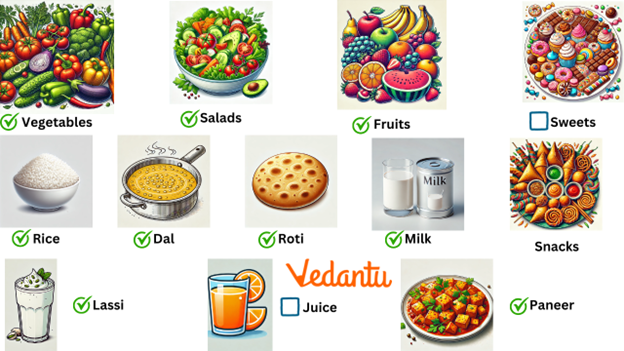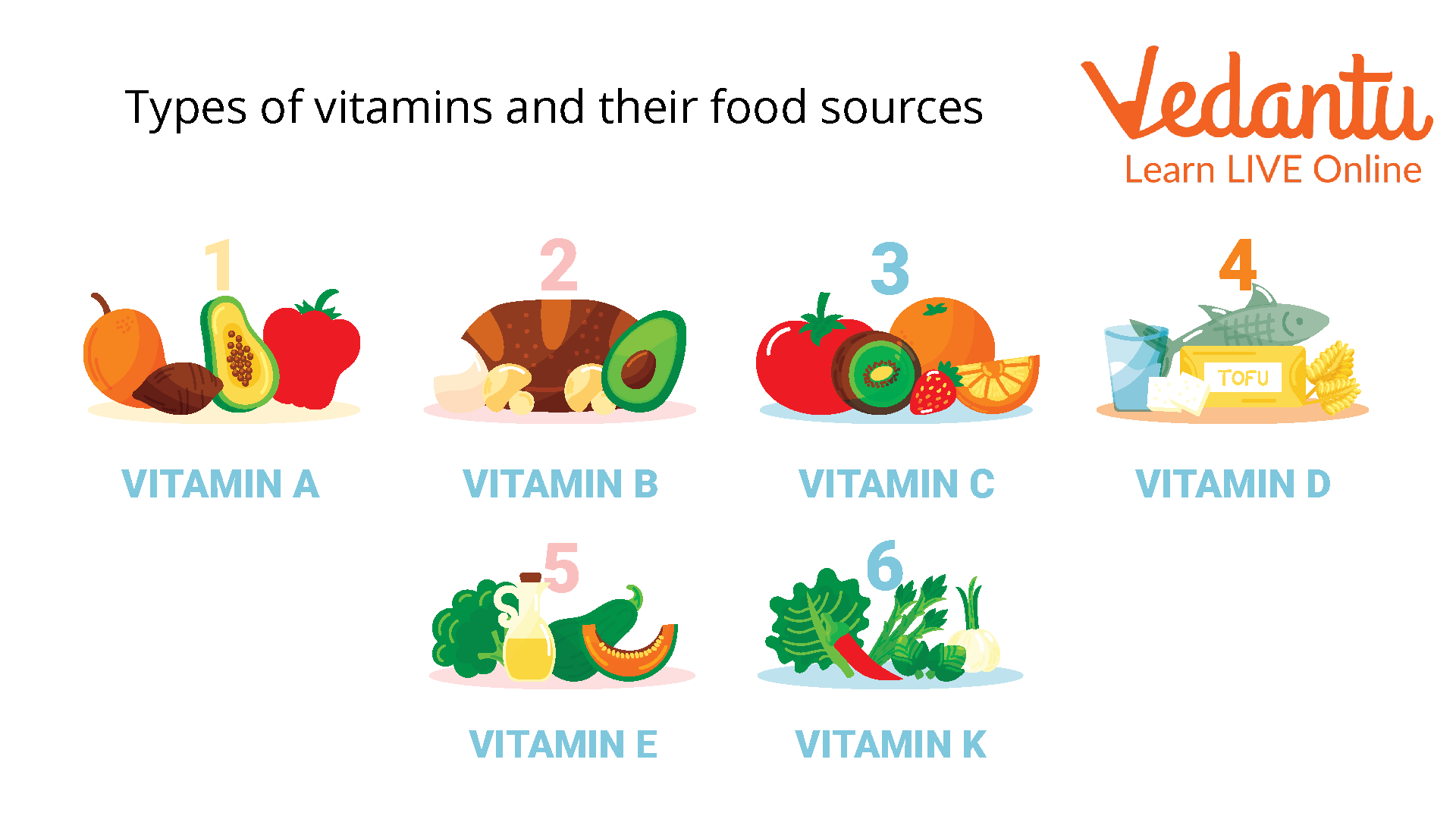Plant and Animal Food Sources: Nutrients & Exam-Ready Tables
Food sources form the foundation of life for all living organisms. In biology, understanding where food comes from and how it nourishes the body is critical to grasping broader concepts such as nutrition, physiology, and ecological balance. Food provides essential nutrients and energy, supporting growth, maintenance, and all biological functions.
All food that humans and animals consume comes from a variety of sources. These can generally be classified as plant-based foods, animal-based foods, and others like fungi or microorganisms. By studying food sources, students build a solid base for advanced biology topics such as digestion, metabolism, and food chains.

What Are Food Sources?
A food source is any plant, animal, or microorganism that provides nutrients needed by living beings. These nutrients include carbohydrates, proteins, fats, vitamins, and minerals. The type of food source directly impacts the nutrition an organism receives.
Food sources are broadly grouped into:
- Plant Sources
- Animal Sources
- Other Sources (e.g., fungi, algae, microorganisms)
Types of Food Sources: Breakdown and Examples
Understanding the different types of food sources helps students identify their nutritional importance and role in Biology.
| Type | Examples | Key Nutrients |
|---|---|---|
| Plant Sources | Fruits, vegetables, cereals, pulses, seeds, nuts, oils | Carbohydrates, vitamins, minerals, fibre |
| Animal Sources | Milk, eggs, meat, fish, poultry, dairy, honey | Proteins, fats, vitamin B12, iron, calcium |
| Other (Fungi/Microorganisms) | Mushrooms, yeast, seaweed, probiotics | Protein, vitamins, minerals |
Major Nutrients and Their Food Origins
Essential nutrients are grouped as macronutrients (needed in large amounts) and micronutrients (needed in small amounts). Food sources differ in the quantity and type of nutrients they provide.
| Nutrient | Plant Source | Animal Source |
|---|---|---|
| Protein | Pulses, soybeans, nuts | Milk, eggs, meat, fish |
| Carbohydrate | Rice, wheat, maize, fruits | Milk, honey |
| Fat | Oils (mustard, groundnut), seeds | Butter, ghee, eggs |
| Iron | Spinach, beans | Red meat, liver |
| Calcium | Ragi, green leafy vegetables | Milk, cheese |
| Vitamin B12 | Not found in plants | Meat, eggs, dairy |

Key Definitions in Food Sources
| Term | Definition | Significance |
|---|---|---|
| Macronutrients | Nutrients needed in large quantity | Energy, growth, metabolism |
| Micronutrients | Nutrients needed in trace amounts | Immunity, enzyme function |
| Balanced Diet | Diet with all essential nutrients | Health, disease prevention |
Importance of Knowing Food Sources
Awareness of food sources helps choose a balanced diet and understand nutrient deficiencies. For example, only animal sources provide vitamin B12, essential for nerve health, while green vegetables are excellent for iron.
Balanced consumption from both plant and animal sources promotes good health, growth, and development.
Applying Knowledge: Practice Questions
- Name two animal sources rich in protein.
- List one plant and one animal source of iron.
- Which nutrient is mainly absent in plant sources—vitamin C, protein, or vitamin B12?
- Give two examples of food obtained from fungi or microorganisms.
To continue learning more about related topics in Biology, visit:
Understanding food sources lays the foundation for mastering human biology, health science, and environmental studies. Regular practice and referring to trusted resources will support clear conceptual learning as you advance to more complex biological systems.


FAQs on Food Sources in Biology: Definitions, Types & Examples
1. What are food sources in biology?
Food sources in biology refer to plants, animals, and microorganisms that provide essential nutrients such as carbohydrates, proteins, fats, vitamins, and minerals. These nutrients are required by humans and animals for growth, energy, and body maintenance.
2. What are the main plant food sources?
Plant food sources include cereals (rice, wheat), pulses (beans, lentils), fruits, vegetables, nuts, seeds, and plant oils. These provide a variety of nutrients like carbohydrates, proteins, vitamins, and minerals.
3. What are some examples of animal food sources?
Key animal food sources include milk, eggs, meat, fish, poultry, and honey. These are rich in complete proteins, vitamin B12, calcium, and fats.
4. What are macronutrients and micronutrients?
Macronutrients are nutrients needed in large amounts: carbohydrates, proteins, and fats.
Micronutrients are required in smaller quantities: vitamins (like A, C, D, B-complex) and minerals (such as calcium, iron, zinc). Both are essential for body functions, growth, and health.
5. What are five examples of food sources for key nutrients?
Examples of food sources for important nutrients:
• Iron: Spinach, red meat
• Calcium: Milk, ragi
• Vitamin D: Egg yolk, fortified milk
• Protein: Pulses, fish
• Vitamin A: Carrots, liver oil
6. Which vitamin is almost absent in plant food sources?
Vitamin B12 is almost entirely absent in plant food sources. It is mainly found in animal-derived foods such as meat, eggs, and dairy products.
7. What is the difference between a food source and a food chain?
A food source is the original provider of nutrients (plant or animal).
A food chain is a sequence showing how nutrients and energy pass from one organism to another (e.g., plant → herbivore → carnivore).
8. What are the main dietary sources of iron?
Major iron-rich foods include spinach, beans, red meat, and liver. Iron is essential for haemoglobin production and preventing anaemia.
9. Which foods are high in calcium?
Foods rich in calcium are milk, cheese, ragi, leafy greens (like spinach), and sesame seeds. Calcium is vital for bone and teeth health.
10. What are plant and animal food sources of proteins?
Plant protein sources include pulses (lentils), soybeans, and nuts.
Animal protein sources include milk, eggs, meat, and fish.
11. What are the functions of vitamins and minerals in the body?
Vitamins and minerals are needed for:
• Immune system support
• Growth and development
• Metabolism regulation
• Bone and blood health
Each vitamin and mineral has unique functions, such as iron for haemoglobin, calcium for bones, and vitamin A for vision.
12. How can students remember sources of different vitamins and minerals for exams?
To remember sources of vitamins and minerals for exams:
• Use tables and charts in NCERT books
• Create mnemonics (e.g., 'Spinach and Red meat' for Iron)
• Practice with sample questions
• Revise key sources weekly for retention










